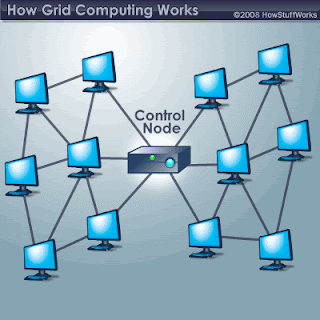What is your understanding of Customer Relationship Management (CRM?)
CRM refers to the business process of managing all of the aspects surrounding a customer’s relationship with a firm. This is done to ensure an organization maintains a strong relationship with already existent customers and implements ways to attract new customers. Customer relationship management is crucial to increase customer loyalty, retention (as it is six times more costly to loose a customer than to find a new one) and ultimately increase a firm’s profitability. Individualisation is a key motivator within the field of CRM.
Description of CRM (http://www.marketingteacher.com/IMAGES/crm_model.gif)

Compare operational and analytical CRM
Operational CRM supports traditional transactional processing for the day to day front-office operations or systems that deal directly with the customers. Operational CRM deals with the organization and simplifying of customer information. However, analytical CRM supports the back-office operations & strategic analysis & includes all systems that don’t directly deal with customers. Analytical CRM implements the use of data-mining to track operational data to identify trends allowing a firm to better serve its customers. The key difference between these two methods of CRM is the interaction between the organization and its customers.
Describe and differentiate the CRM technologies used by marketing departments and sales departments
The two key business functions which utilise CRM technologies are the marketing and sales departments. A typical marketing department of a firm would use the following tools to gain and manage customer information.
- List generator: Compiles customer information from an array of sources for various uses
- Campaign management: the process in which campaigns are planned, produced, distributed and reported
- Cross-selling: selling an additional product or service to an existing customer (Oxford Dictionary)
Up-selling: Up selling (sometimes 'up-selling') is a sales technique whereby a salesperson induces the customer to purchase more expensive items, upgrades, or other add-ons in an attempt to make a more profitable sale (http://en.wikipedia.org/wiki/Up-selling)
The sales department uses slightly different CRM technologies allowing customer service employees to be informed on information regarding regular customers. The following sales CRM technologies are implemented by an array of firms.
- Sales management: Sales management is attainment of an organization's sales goals in an effective & efficient manner (http://en.wikipedia.org/wiki/Sales_management)
- Contact management: Allows organizations and individuals to record relationships and interactions with customers and suppliers. This information includes all emails, documents, jobs, faxes, calendar and more (http://en.wikipedia.org/wiki/Contact_management)
- Opportunity management: Analysing all external opportunities available for a firm to tackle in the customer service field e.g. ability to attract or induce new customers through effective customer service
How could a sales department use operational CRM technologies?
A sales department could use the aforementioned operational CRM technologies to induce new customers, ultimately enabling them to maximise sales, thus profitability and customer-retention.
Describe business intelligence and its value to businesses
Business intelligence is defined as the implementation of applications and technologies to gather provide access to and analyse data and information to enable management to more easily solve decisions. Business intelligence is commonly relied upon by businesses to determine the value of a firms customers, identifying exceptional employees (e.g. through sales history), determining the success of marketing campaigns and determining whether certain business activities are profitable.
Business Intelligence (http://www.theaccidentalsuccessfulcio.com/wp-content/uploads/2009/03/business-intelligence-graph.gif)

Explain the problem associated with business intelligence. Describe the solution to this problem.
A common problem attributed to business intelligence is the notion of ‘data rich, information poor’. This simply means that business intelligence can gather a lot of data but may become overwhelming for a business to handle, and thus can be information poor. This means that as there is an overload of data, it cannot all be analysed and translated into meaningful information. This prevents firms from benefits from such data when making analytical and strategic decisions. Additionally, all of this information may not be accessible to the departments that require it for example the marketing or finance department as it may be left in the hands of IT. A solution to this ‘data rich, information poor’ problem could be the shortening of the ‘latencies’ which is the time frame for the data to be ready for analysis. (I.e. the time of extracting, transforming and cleansing the data and loading it onto the database).
Example of Data Rich, Information Poor (http://gothamschools.org/wp-content/uploads/2008/10/06hargreaves.jpg)

What are two possible outcomes a company could get from using data mining?
There are various outcomes a business could get from using data mining. Such outcomes include a cluster analysis, association detection and statistical analysis.
Cluster analysis: finding similar data in various databases and grouping such information together e.g. trends in male/female purchases. This is done by dividing information into mutually exclusive groups to identify Behavioural traits.
Association detection: impact of change on one value i.e. x on another value i.e. y. reveals the degree to which variables are related and analyses the nature of such relationships. E.g. market basket analysis analyses websites to identify statistics of buying behaviour and forecasts future behaviour
Statistical analysis: use of regression analysis and statistics to analyse trends in data. Performs such functions through distributions and calculations. E.g. percentage of sales per store, forecasting (making predictions based on present information) and time series information (time stamped information collected at a particular frequency).
Youtube presentation on statistical data mining: http://www.youtube.com/watch?v=zRsMEl6PHhM





















